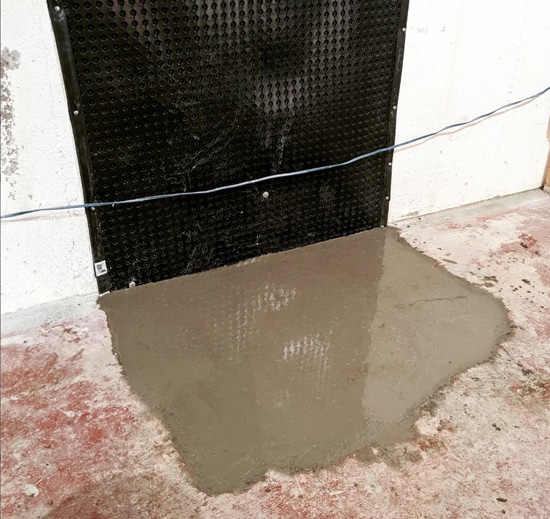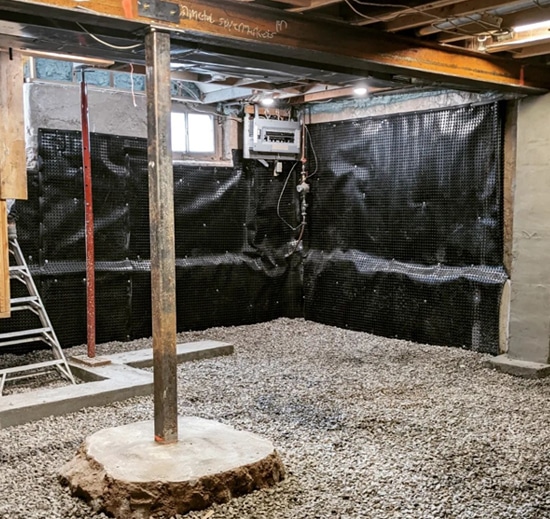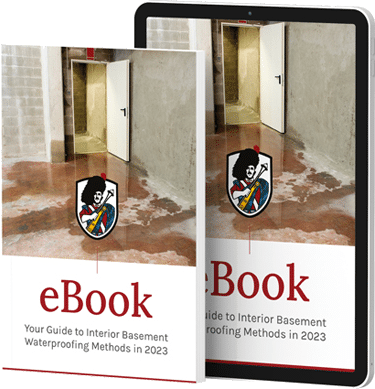Crumbling Foundation Repair Toronto & GTA
Our Services Are Trusted By








Crumbling Foundations: Repair Before It's Too Late
So you bought a beautiful century house, and you love it. You love the style; you love the design, the massive wood-burning fireplace, the high ceilings, everything is perfect! But you go to the basement of your old century home, which is made up of stones to give that vintage look. The house’s basement is old, and the previous owner had not taken much time to care for it. The whole basement floods every rainy season, and many cracks are all over the basement walls. The joints in the stone have started to wear out, and water leaks from them. It’s an old home, and no waterproofing membranes are used in the basement. The hydrostatic pressure takes a toll on these walls, causing more and more cracks. The crumbling basement is on the verge of collapse, and you need crumbling basement wall repair before things get worse. The consequences of not working quickly on the repairs can be severe, and the entire house’s structural integrity is at stake.
Acting fast in these situations saves you from accidents and prevents the expense of thousands of dollars in major repairs. You want to repair your basement but also restore its original appearance. What do you do, and who do you call? That’s where GJ MacRae Foundation Repair comes in.
Crumbling Foundation Repair and Restoration Experts in Toronto

GJ MacRae is a complete basement waterproofing and foundation repair company in Toronto. We are Toronto’s highest-rated repair company for crumbling foundation and basement restoration. We know the importance of restoring the original look and ensuring that the foundation is strong at the same time. Over the decades, we have carried out hundreds of century-home crumbling foundation repair and restoration projects, successfully restoring the original look and strengthening the foundation. We like to combine multiple methods to provide that desired finish to your basement. We perform historical restoration with the help of the stones on the site and natural hydraulic lime mortar. This lime mortar helps restore the original look and provides much-needed elasticity. We refrain from using modern-day Portland mixtures because they are very hard and can cause the fieldstones in between the mortars to crack. These kinds of crumbling foundation restoration need much expertise, and the inability to use the correct products can lead to the foundation walls’ failure in just ten years rather than lasting indefinitely.
As part of the restoration process, it’s also worth considering a professional basement concrete floor installation to enhance durability and protect against future moisture issues.
We are just the right team for your crumbling foundation repair in Toronto. Our skilled technicians have vast experience working on century homes and restoring that original look. We embrace the strength of modernity while still being rooted in the beauty of vintage looks. We know what to use, how to use it, and when to deliver that accurate result. You bought that century home because its design was the first thing you fell in love with, and we will restore that for you.
Our Proven Foundation Repair Process
01
Assessment
We thoroughly examine damaged foundation walls and identify cracks and weaknesses.
02
Excavation
We carefully excavate down to the footings by hand to ensure a comprehensive repair.
03
Foundation Replacement
Our team expertly removes and fully replaces the old damaged footing and foundation wall.
04
Drainage Enhancement
We waterproof and install a new weeping tile system to the new foundation wall, ensuring adequate water management around your home’s foundation.
Repair Process: Crumbing Foundations
We like to fuse the old approach with modern waterproofing methods to give more life to your century homes. These century homes weren’t just about style. They lasted so long because they were meant to stay for a long time, and they were strong. Proper restoration from a crumbling foundation expert like GJ MacRae can go a long way, and your beautiful home can last another century.
Why Choose GJ MacRae?
- Highest Rated Customer Service: Customer satisfaction is our primary goal. We will work with you closely to understand your needs and provide the best solution to your foundation repair project.
- Comprehensive Services: With GJ MacRae, homeowners can find all foundation repair solutions under one roof. From foundation crack repair to exterior waterproofing and weeping tile installations, we have the expertise and resources to address your complete waterproofing needs from start to finish.
- Extensive Experience: With nearly 50 years of experience in the industry, GJ MacRae is known for delivering quality, long-term basement waterproofing solutions while tackling even the most challenging waterproofing projects with confidence and expertise.


Protect Your Foundation
- Competitive Pricing: GJ MacRae offers competitive basement waterproofing services without compromising quality. We provide transparent, fair quotes that ensure homeowners receive the best long-term value.
- Quality Materials: GJ MacRae uses high-quality repair materials combined with the latest waterproofing techniques, and we are experts in all phases of basement waterproofing. Plus, we offer innovative solutions that guarantee long-lasting protection against water infiltration.
- Protect Your Investment: When protecting your foundation walls and basement from water damage, choosing GJ MacRae Foundation Repair for basement waterproofing in Toronto ensures you receive the highest quality repair solution to safeguard your foundation long-term.
Basement Waterproofing and Foundation Repair Projects in Toronto and the GTA
Some Kind Words From Our Customers
Add Life To Your House: Crumbling Foundation Repair
We all have a deep attachment to our homes, where we spend most of our lives, and seeing them crumble down is a hard feeling. However, timely repairs and maintenance can provide additional life to your beloved home. The foundation is the base of your home, keeping your entire house in place. Maintaining the structural integrity of your house is vital; for that, a strong foundation is necessary.
If you have an old home with crumbling foundations, make sure to give us a call. Our team will inspect your basement situation and provide the ideal solution. Feel free to contact us at (905) 824-2557 or complete the form below.

Download Our Free eBook
We’re honored to provide these resources to help you on your journey, and we know reputations are hard to build and easy to lose. That’s why our business is built around two simple promises:
Honesty and Transparency.
We genuinely want each step of your journey (from the very first Google search to a leak-free basement) to be positive!

What Does quality Foundation Repair Look Like?
RECENT PROJECT PHOTOS
RECENT PROJECT VIDEOS
Our Service Areas
At GJ MacRae, we take pride in extending our services across the GTA to meet our valued customers’ unique needs, and our dedicated team is committed to delivering top-notch solutions all year long. Our expansive service areas are a testament to our unwavering commitment to the highest quality foundation repair services and customer satisfaction in the GTA.
Schedule a Free Consultation Today
Fill out our request form and we will contact you as soon as possible for a free foundation repair consultation!
Frequently Asked Questions
Expert Waterproofing Services for Your Home
GJ MacRae Foundation Repair has been the industry leader for reliable basement waterproofing in the Greater Toronto Area Since 1975. Nearly five decades of experience inform our proven multi-stage repair process based on below-grade drainage considerations that allow us to waterproof concrete blocks, poured walls, and stone rubble foundation walls properly for the long term. Our repair solutions for leaking foundation cracks include using bitumen-based barrier membranes and high-efficiency weeping tile systems, which give us the edge in reliability and allow for the most robust foundation repair warranty available today in the GTA. Experience the GJ MacRae difference for year-round basement leak repairs in Toronto, Oakville, Mississauga, Burlington, Hamilton, Milton, and Georgetown. If you spot cracked foundation walls, leaky foundations, or any other basement waterproofing issues in your house, reach out and call us today at (905) 824-2557.







